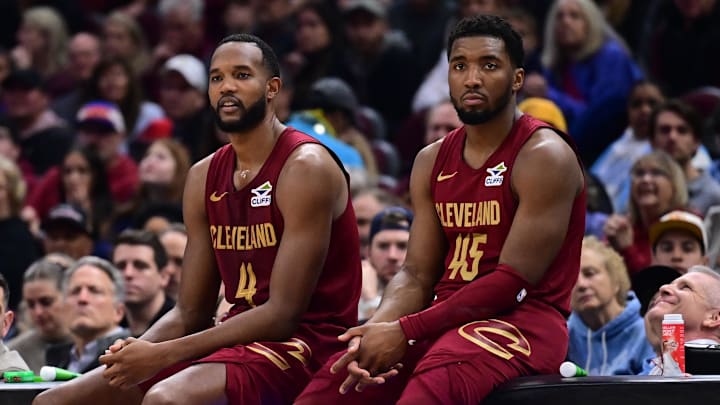Dropping Game 1 against the Indiana Pacers should not be grounds for the Cleveland Cavaliers (or the fanbase) to freak out over impending disaster. They have plenty of basketball left to play, and there is low-hanging fruit they can clean up in Game 2 and beyond.
Getting back Darius Garland, who has missed the past three games with a left toe injury, would be the ultimate adjustment. Cleveland clearly misses his shot-making, passing, and overall offensive shiftiness. Donovan Mitchell posted his second-highest usage rate of the year, across both the regular season and playoffs, in Game 1. Garland's return simplifies life for him, and streamlines life for everybody else.
Still, Garland's absence doesn't have to be the difference between the Cavs losing and winning this series. And that's a good thing, because his status for Game 2 remains up in the air. Cleveland has other areas in which it can futz and fiddle. The most important adjustment of all: keeping Indiana's offense more in check by not abandoning the three-point line.
The Cavs let up too many wide-open looks in Game 1
The Pacers deserve all the credit in the world for how they attacked the Cavs, who seemed genuinely caught off-guard by the speed at which they play. But Cleveland also afforded Indiana too many gimmes from beyond the arc.
Over 30 percent of the Pacers' three-point attempts in Game 1 went uncontested, which is defined as a defender being six or more feet away. That is a monster number. For context, Cleveland allowed just 24.8 percent of the Miami Heat's triples to go unguarded in Round 1. And for the season, Cavs opponents saw only 22.5 percent of their treys go uncontested overall.
Indiana made Cleveland pay for all of the space afforded to their shooters. The Pacers canned 52 percent of their wide-open threes (13-of-25). That clip likely isn't sustainable, but it's directly related to the Cavs being outscored by 30 points from deep in Game 1.
Conceding these types of attempts can be part of Cleveland's shell defense. That isn't a problem unless the other team sets the world on fire from long range, or the Cavs aren't their usual scintillating selves from distance.
Both were issues in Game 1. Andrew Nembhard and Aaron Nesmith shot a combined 9-of-10 on uncontested looks, while Cleveland converted just 11.2 percent of its own three-balls (3-of-11). In some ways, the Cavs are fortunate the discrepancy wasn't larger. Tyrese Haliburton didn't have his best night from distance, burying just one of his five wide-open triples.
Cleveland has the tools to fix this
Tightening up the space beyond the arc is well within the bandwidth of Cleveland's defense. So many of the high-quality looks it surrendered to the Pacers seemed less by design, and more so due to overreaction.
Pretty much everyone on Cleveland started selling out off of shooters after the first quarter. Perhaps Indiana nailing 66.7 percent of its twos in the first quarter, including 83.3 percent of its looks in the paint, rankled the Cavs.
Whatever the reasoning, the Pacers' primary ball-handlers started sucking in bodies galore on their drives, and Cleveland did not always recover exceptionally well. Certain off-ball defenders also seemingly started sagging off their man when one of the Cavs big men found themselves guarding on a switch.
This held especially true when that big was Jarrett Allen—and for potentially good reason. Cleveland conceded 1.86 points per possession when he registered as a defender on Haliburton. (The league average for the playoffs is 1.15 points per possession, FYI.) But there is a difference between trying to insulate Allen, and overreacting to guys like Nembhard, Bennedict Mathurin, and even Nesmith going downhill.
Both Allen and Evan Mobley generally have the chops to hang in space, regardless of the matchup. That gives the Cavs more flexibility to stay home on Indy's shooters, or at least not collapse so far off of them. And if they are worried about Allen guarding Haliburton, specifically, head coach Kenny Atkinson can always cater more to Mobley-at-the-5 units.
Much of this becomes moot if and when Cleveland starts hitting more of its own threes, and when Garland returns. The Cavs can concede more space behind the three-point line, and for the most part, live with the consequences. On nights in which they're shorthanded or don't have it going from downtown themselves, though, they need to make contesting threes more of a priority.
Dan Favale is a Senior NBA Contributor for FanSided and National NBA Writer for Bleacher Report. Follow him on Bluesky (@danfavale), and subscribe to the Hardwood Knocks podcast, co-hosted by Bleacher Report's Grant Hughes.
